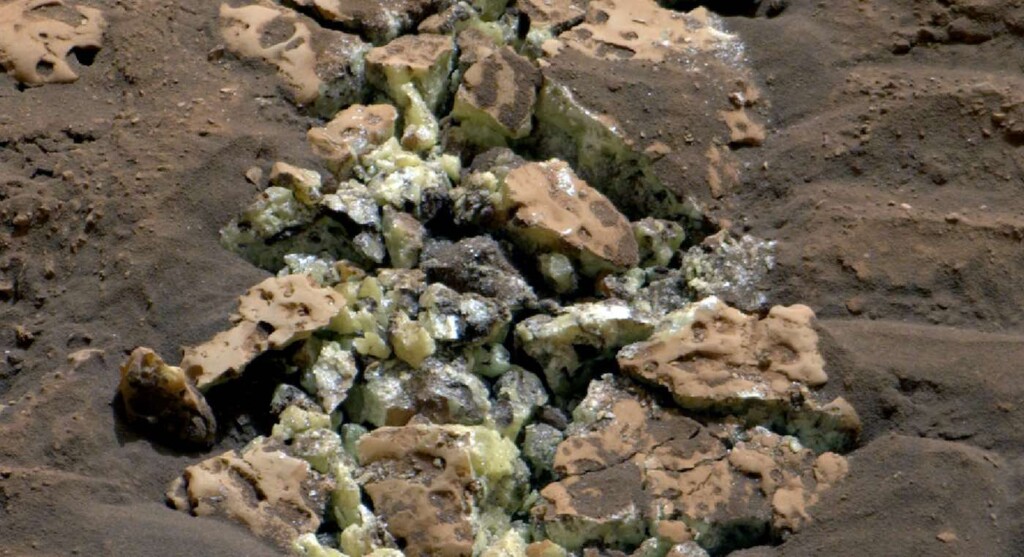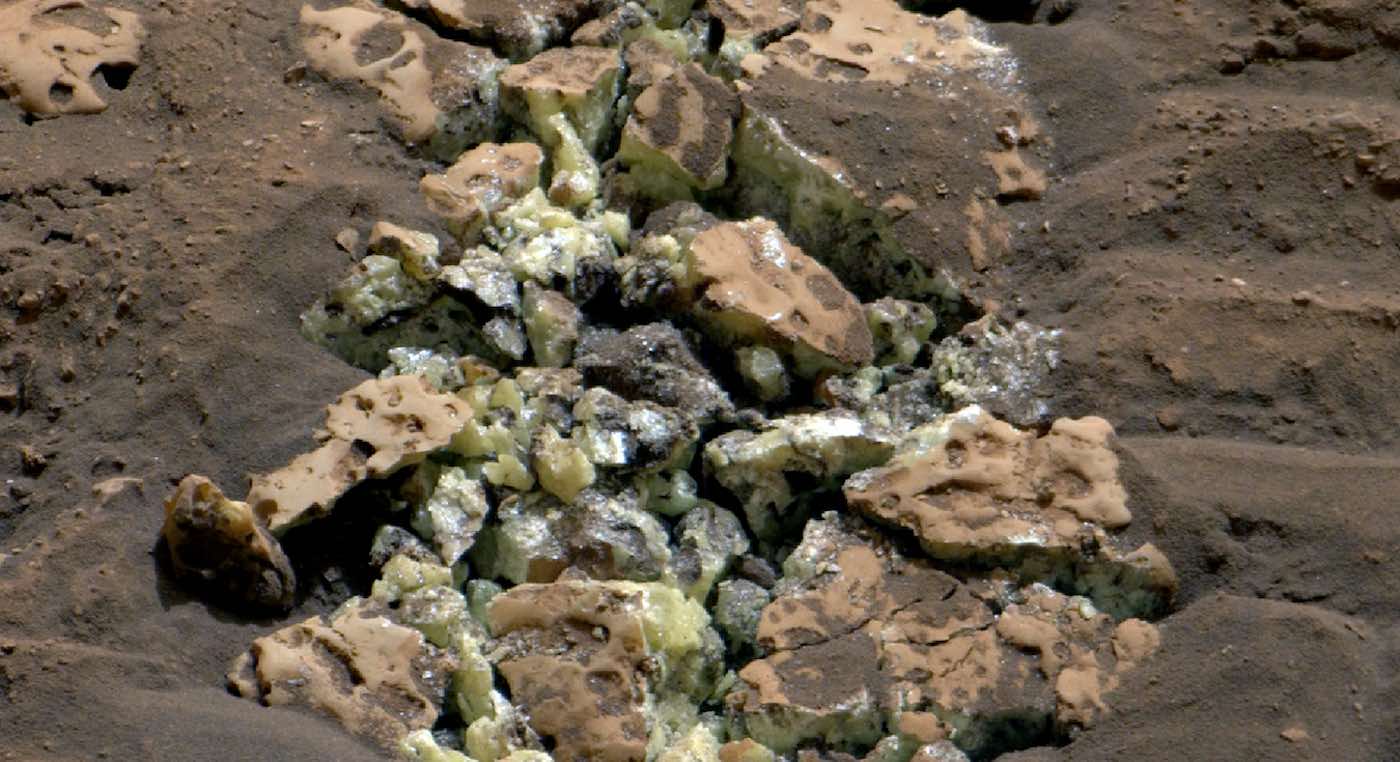
NASA’s old but still kickin’ Curiosity rover drove over a boulder, which crumbled to reveal yellow sulfur crystals.
Rocks made of pure sulfur have never been seen before on the Red Planet, and scientists say the conditions in which such crystals form aren’t associated with the location the rover was exploring.
Since October 2023, the rover has been exploring a region of Mars rich with sulfates, a kind of salt that contains sulfur and forms as water evaporates. But where past detections have been of minerals consisting of a mix of sulfur and other materials, the rock Curiosity recently cracked open is made of elemental, or pure, sulfur.
“It forms in only a narrow range of conditions that scientists haven’t associated with the history of this location,” a NASA spokesperson said.
“And Curiosity found a lot of it—an entire field of bright rocks that look similar to the one the rover crushed.”
Curiosity made the discovery while off-roading within Gediz Vallis channel, a groove that winds down part of the 3-mile-tall (5-kilometre-tall) Mount Sharp, the base of which the rover has been ascending since 2014.
NASA says it isn’t clear what relationship, if any, the elemental sulfur has to other sulfur-based minerals in the area.
Curiosity’s project scientist, Ashwin Vasavada of NASA’s Jet Propulsion Laboratory, compared finding a field of stones made of pure sulfur to “finding an oasis in the desert.”
MORE NEWS LIKE THIS: Lava Tubes and Water Frost Found on Mars Offer Double Opportunity in Search for Life
“It shouldn’t be there, so now we have to explain it. Discovering strange and unexpected things is what makes planetary exploration so exciting,” said Vasavada.
CNN reports that Vasavada and the team have seen evidence of bright white calcium sulfate, also known as gypsum, within cracks on the Martian surface that are essentially hard-water deposits left behind by ancient groundwater flows.
MOST RECENT ROVER DISCOVERIES: Scientists Puzzling Over Bright White Rock on Mars – the First of its Kind, Never Seen Before
The mineral itself is no pink diamond: sulfur is the tenth most common element by mass in the universe, and the fifth most common on Earth. Elsewhere in the solar system, it may be present near the Lunar crater Aristarchus, while the distinctive colors of Jupiter’s enormous satellite Io are believed to result from forms of molten, solid, and gaseous sulfur.
Thankfully, while people associate sulfur with the smell of rotten eggs, the result of hydrogen sulfide gas, NASA confirms that elemental sulfur is odorless.
SHARE This Update On Martian Exploration With Your Friends…




















